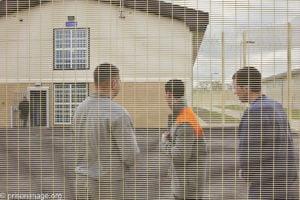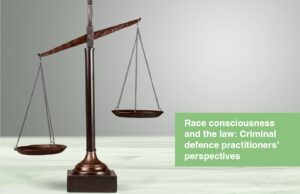Disproportionality
A new (19 February 2025) report from the Youth Endowment fund explores Racial disproportionality in violence affecting children and young people and makes five key recommendations for the new Government. Violence obviously has devastating impacts on children and families. While children from all backgrounds can face violence, children from certain ethnic backgrounds are less safe.
The majority of children in the youth justice system, and involved in violence, are White. However, relative to their share of the population, some minority ethnic groups – and Black children in particular – are over-represented, while other groups – e.g. those from Asian backgrounds – are under-represented.
The report
This report draws on the analysis of public datasets, findings from the YEF’s work across multiple sectors — including systematic reviews and surveys of children’s experiences — and feedback from external experts.
While many previous reports have highlighted racial disproportionality in the youth justice system, this report adds new insights by focusing specifically on violence. It examines preventative factors beyond the justice system, such as access to therapy and education, and provides the most up-to-date statistics from public sources.
Key findings
Children from certain ethnic groups – especially Black children and young people – are disproportionately likely to be victims of violence. Relative to their share of the population, Black children and young people are six times as likely to be victims of homicide.
- Children from certain ethnic groups are disproportionately likely to be represented in the criminal justice system and to become involved in violence, including as victims. For example, while Black children aged 10–17 make up 6% of the population, in 2023/24, they represented 10% of arrests, 15% of stop and searches and 24% of the monthly youth custody population. They are also five times more likely to be sentenced to custody for homicide and are more likely to self-report being involved in assault both as victims
and perpetrators. - This does not mean that violence is only relevant to (or mostly caused by) people from minority ethnic backgrounds. White children make up 71% of 10–17-year-olds who are stopped and searched, 76% of those arrested and 72% of those cautioned or convicted for an offence. There are also other significantly over-represented groups, such as children growing up in poverty and children in care, which intersect with racial disproportionality.
- Broad ethnic groupings can mask important underlying differences; to create change we need to understand this detail. For instance, although often categorised as ‘White’, children from Gypsy or Irish Traveller backgrounds are significantly over-represented in the criminal justice system. 10-17-year-olds from Black Caribbean backgrounds are significantly more over-represented in arrests, than children from Black African backgrounds.
- Most worryingly, racial disproportionality has been getting worse over the last decade. While the total number of children involved in the justice system from all backgrounds has been falling, the proportion who are from Black or Mixed ethnic backgrounds has increased over the last 10 years. Despite small improvements in the last few years, disproportionality in homicide rates has stayed consistently higher than it was 10 years ago.
First five steps
The report highlights five challenges for the new government, both inside and outside of the criminal justice system. The report describes the scale of these issues and points to evidence-informed approaches that have potential for both reducing
disproportionality and reducing violence.
1. Ensure stop and search is fair and ‘intelligence-led’
Stop and search is disproportionately used with Black children and young people. These are necessary policing powers for public safety, which are supported by the majority of children of all ethnicities. However, how they are used and how stop and searches are conducted really matters. The current evidence suggests that increasing stop and search has limited effectiveness as a deterrent tactic in the UK and has the potential to lead to negative outcomes.
To increase effectiveness and reduce disproportionality, it should be ‘intelligence-led’, and conducted in a way that is fair, and maintains the dignity and trust of those stopped. Hotspots and problem-oriented policing are likely to be more effective as deterrents, with fewer risks of adverse outcomes.
2. Make Outcome 22 a positive outcome in the police outcomes framework
Outcome 22 enables the police to divert children who have committed offences to positive support that could protect them against future involvement in crime. An important feature of this outcome is that an admission of guilt is not required for it to be used. There is some evidence that requiring an admission of guilt to access diversion options is contributing to racial disproportionality in the youth justice system. Giving the police an option to divert children without this requirement may help to address racial disproportionality, and reduce reoffending. However, Outcome 22 is currently not seen as a positive outcome in the crime reporting outcomes framework, which means that police can be disincentivised from using it.
3. Monitor and improve access to psychological therapy
Therapeutic approaches for individuals and families have good evidence of reducing involvement in violence. However, compared to their share of the population, Black and Asian
children struggle to access timely and appropriate mental health support. Lack of trust in services, low awareness among professionals of the impact that racism can have on mental health, discriminatory treatment, and differing perceptions of mental health are barriers. We require better monitoring of what therapeutic support children are receiving, and more accessible services for Black, Asian and other minority ethnic families.
4. Deliver evidence-based support to children absent or excluded from school
Absence, suspension and exclusion from school are associated with involvement in crime and violence – both for victims and perpetrators. Children from Gypsy, Roma and Traveller communities; White and Black Caribbean children; and Black Caribbean children are more likely to be absent, suspended or excluded. The government should support schools in delivering evidence-informed strategies for reducing absence and providing appropriate support for suspended and excluded children. This would have disproportionate benefits for over-represented groups.
5. Urgently reduce disproportionality and improve conditions in youth custody
Racial disproportionality in the number of children serving custodial sentences is stark. Black children make up 6% of all 10–17-year-olds, but in 2023/24, they accounted for 24% of children in custody – four times their population share. Meanwhile, Gypsy, Roma and Traveller children make up less than 1% of children; yet a self-reported 7% of children in custody are from Gypsy, Roma and Traveller backgrounds – over seven times their population share. Children from
Black and Gypsy, Roma and Traveller backgrounds are also less safe while in custody.
While the ambition should be to urgently reduce the disproportionate number of children from Black and Gypsy, Roma and Traveller backgrounds in the secure estate, it is also vital that the government improves the condition and safety of children serving custodial sentences and acts upon the continued recommendations of HM Inspectorate of Prisons. They should also invest in post-custody resettlement programmes.
Thanks to Alex Robinson for kind permission to use the header image in this post which was previously published on Unsplash.









